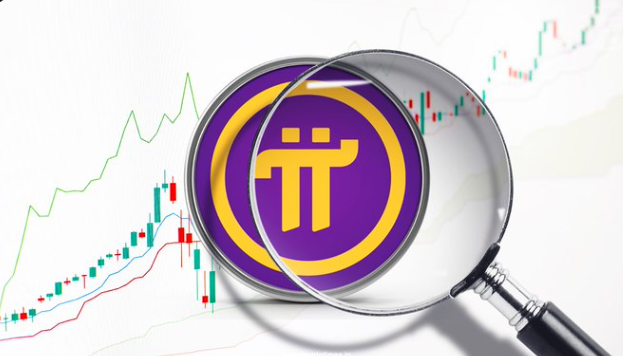Pi Network is on the cusp of a major transformation. It's shifting from a closed environment to a fully open Mainnet, enabling direct user-to-user coin transfers and robust dApp support. Adding to this technical leap, the Pi Foundation has launched Pi Network Ventures, a $100 million fund designed to back promising startups and applications in Web3, fintech, and AI. Momentum for exchange listings, particularly with Binance, is growing, fueled by strong community interest and ongoing backend tests. Meanwhile, Pioneers are continuing their KYC migrations and actively exploring testnet dApps. This article dives into Pi's journey, its eagerly awaited Phase 4 launch, ecosystem funding, market dynamics, and what Pioneers and developers need to know to be part of Pi’s next big chapter.
The Moment That Changed Pi
Since its beta program began in 2019, Pi Network has drawn in over 70 million “Pioneers” mining on their mobile devices. What started as an experiment in accessible mobile mining is now on the brink of its most significant step: opening its blockchain to the wider world. The success of the upcoming Phase 4 Mainnet launch will hinge on Pi's technical readiness, developer engagement, and market acceptance. This critical turning point in the project's long-term development highlights the increasing anticipation within the Pi community for real utility and broader adoption.
Pi Network Explained: What You Need to Know
Mobile-First Mining
Pi's signature feature is its energy-efficient, mobile-based mining. This allows millions of users to accumulate tokens without excessive battery drain or data costs, truly setting Pi apart from traditional crypto mining.
Stellar Consensus Protocol
At its core, Pi relies on the Stellar Consensus Protocol (SCP). This system uses trusted quorum slices instead of energy-intensive Proof-of-Work, aiming to boost security, decentralization, and environmental sustainability—a distinct philosophical shift in blockchain design.
The Road to Mainnet: A Three-Phase Journey
Phases 1 & 2: Building the Enclosed Environment
The initial phases were all about securing the network with community-run nodes and refining consensus under controlled conditions, laying down the essential groundwork for the Pi ecosystem.
Phase 3: KYC and Migration Progress
Pi implemented a native, free KYC process, verifying millions of accounts and enabling the migration of Testnet balances into Mainnet wallets. This migration process has resumed with expanded verification checkpoints and two-factor authentication. As of April 17, 2025, over 12 million Pioneers have successfully migrated. The core team is prioritizing these migrations, including initial ones, followed by second migrations (which include referral bonuses), and then ongoing periodic migrations. The aim is to get all legitimate, verified Pioneers migrated as quickly as possible, ensuring accuracy and security.
Phase 4 and Beyond: Opening the Network Gates
Phase 4 marks the full Mainnet activation, allowing Pi coin to become tradable and the network to support decentralized applications. While a fixed date for a fully “open” Mainnet wasn't initially public, Trust Wallet's blog indicates the Open Mainnet launched on February 20, 2025, removing the firewall and allowing external connectivity. However, reports from May 2025 suggest that while the Open Mainnet is technically live, full trading and withdrawals remain limited. The project is still seen by some as an incomplete blockchain initiative lacking robust smart contract functionality and open-source transparency. Nevertheless, recent stress tests, involving billions of Pi, signal backend readiness for high-volume transactions. The core team continues to focus on stability checks and security audits.
Powering Innovation: The $100 Million Ecosystem Fund
Launching Pi Network Ventures
On May 16, 2025, Pi Network unveiled Pi Network Ventures, a dual-denominated $100 million fund. Its purpose: to invest in startups building on Pi’s blockchain, with a focus on Web3 services, fintech solutions, and AI-driven marketplaces. Held in both Pi and U.S. dollars, the fund aims to strategically invest in businesses that advance the utility, adoption, and real impact of Pi, ultimately working to “bring Pi to the real world.”
Community Responses
While many welcome the funding boost, some Pioneers have expressed frustration that the fund launched before a full Mainnet release and widespread ecosystem utility. There have been calls for more transparency regarding the fund's operations, with some community members even suggesting the announcement might be a strategy to attract new users rather than a tangible development of the network's utility.
Exchange Listings: The Liquidity Catalyst
Binance Momentum Builds
Binance community polls show strong support (86%) for a Pi listing, and backend wallet tests hint at imminent exchange integration. A Binance listing is considered vital for unlocking liquidity and broadening market participation for the Pi token. However, as of May 16, 2025, Binance has made no official announcement about listing Pi Coin, despite a playful post on X (formerly Twitter) featuring the Pi symbol and that positive community poll in February 2025. The core team has also consistently warned that trading Pi on exchanges is not yet authorized.
Keeping an Eye on Other Exchanges
Other major exchanges are closely monitoring Pi’s network growth, developer traction, and fund-backed projects before committing to a Pi Network listing. Some smaller exchanges like Gate.io, HTX, Bitget, and OKX have already listed Pi, though, as noted, the Pi Network team explicitly states this trading isn't authorized.
Pi Coin Price Dynamics: Surges, Dips, and Stability
The Pi coin price has seen dramatic swings. A brief spike to over $1 briefly placed Pi among the top 20 cryptocurrencies by market cap, followed by subsequent profit-taking corrections. As of May 20, 2025, the live price of Pi is approximately $0.739077 per PI/USD, with a current market cap of $5.31 billion USD and a 24-hour trading volume of $183.86 million USD. The price dropped by 0.22% in the last 24 hours and 28.31% in the last 7 days. Its all-time high was $2.981644. Analysts predict that sustained growth will largely depend on official exchange listings, increased on-chain activity through dApps, and clear use cases emerging from funded projects. Concerns about potential insider profit taking and the overall lack of actual utility continue to influence investors' sentiment.
Developer & Community Engagement: Building the Ecosystem
Testnet dApps in Action
Developers can experiment with pilot dApps in the enclosed environment to ensure full Mainnet compatibility. Despite the Open Network phase being live for over two months, the development team has introduced only limited updates, including a domain name auction feature and the PiFest shopping campaign. Many perceive this as a slow DApp rollout, even with ecosystem funding and Chainlink integration in place.
Applying for Ecosystem Fund Support
Entrepreneurs and builders are strongly encouraged to apply for grants or incubator support through Pi Network Ventures. This is a chance to help shape Pi’s real-world utility. The Pi Foundation, described as an ownerless organization intended to steer the long-term development of the Pi ecosystem, aims to facilitate the network's sustainability and functionality.
Ensuring the Safety and Attentive Management of the Network
While the process to form quorums is largely community-driven, the Pi Foundation maintains oversight during the move to the Mainnet. Regular KYC and security checks are in place to safeguard against bad actors without compromising the decentralized system. Nevertheless, reports from January 2025 indicated that all mainnet nodes are currently operated centrally by the Pi Core Team, which has raised some concerns regarding the platform’s decentralized ethos. KYC remains a requirement for users to access their mined Pi, and privacy concerns persist regarding the centralized collection of personal data.
Considering the Future: Pi’s Ambitions for Years to Come
Pi’s roadmap extends significantly, encompassing fully decentralized governance, marketplace integrations, and global partnerships stretching from 2025 through 2030. For this Web3 project to truly succeed, it will need robust developer adoption, clear regulatory guidelines, and the network’s ability to sustainably grow its user base by providing genuine utility. Given the inherent volatility of the crypto market, Pi's ultimate success hinges on its capacity to deliver on its promises and offer a native token with tangible value beyond just its initial mobile mining appeal.
Conclusion: Pi Finding its Way
Right now, Pi Network stands at a crucial juncture, facing three potentially game-changing events: the Phase 4 launch, significant ecosystem investments, and the possibility of major exchange listings. For Pioneers, completing KYC tasks, exploring funded projects, and actively engaging with testnet applications are essential steps. As Pi transitions from a novel mobile-mined token to an open blockchain, active participation and innovative contributions will determine whether Pi can truly deliver on its promise of accessible, sustainable, and impactful crypto adoption. To make meaningful progress and overcome skepticism, the journey ahead for Pi Network demands continued transparency and a clear, expedited path to actual utility.

















